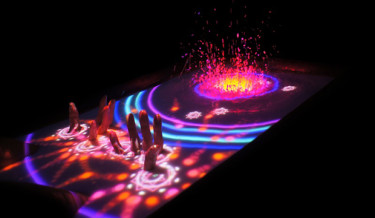Related post
Light Projections Body of Lines Transform the Female Nude
Mar 16, 2016
|
Comments Off on Light Projections Body of Lines Transform the Female Nude
6409
This Augmented Reality Video Game Uses Your Bathtub Water as a Screen
Sep 22, 2015
|
Comments Off on This Augmented Reality Video Game Uses Your Bathtub Water as a Screen
4553
Laser Letters – Typography meets media interaction at The Basel School of Design
Jan 18, 2017
|
Comments Off on Laser Letters – Typography meets media interaction at The Basel School of Design
4738








